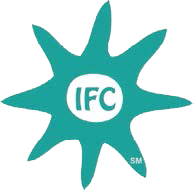For years the Institute for Family Caregiving has been singing the praises of family caregivers as the unsung heroes of healthcare. Over 50 million of them toil day in and day out with the many tasks of taking care of another sick or disabled person. Over 34 million of them are taking care of an adult over the age of 50.
It is no secret that the population of people over the age of 50 is getting ready to explode. A tidal wave of baby boomers will reach ‘peak aging’ over the next decade, adding millions every year to the number of people needing assistance with some or all of the activities of daily living. Since there are fewer than 3 million total nursing home and assisted living beds in the U.S., it has been obvious for some time that most of these aging boomers would need to be cared for at home…primarily by family members.
What is mildly surprising is how long the government has anticipated this moment and has been preparing for it. Experimental and pilot projects in the “Hospital at Home” (HaH) program apparently date back to the mid 90’s—over 25 years! Hospital at Home says exactly what it does: build a fully equipped hospital room in the patient’s home. Borrowing heavily from countries with more accessible and equitable health care systems, the U.S. HaH concept will require acknowledgement of the key role played by unpaid family caregivers in the delivery of healthcare services. It will also be heavily dependent on technology to enable remote monitoring by scarce medical specialists. No wonder there is a huge push to get high-speed internet to every home. It’s not so you can stream Netflix!
Hospital at Home acknowledges reality. There is no way to provide commercial long-term care for the 74 million boomers about to enter the final stages of their sunset years. Things get complicated for the 20% of elderly who live alone; that’s why community-based programs of support (also called friends and neighbors) will be important. At any rate, the healthcare system is about to get a crash course in figuring out how to interface with, relate to, and build trust among the millions of highly diverse families that now populate our nation. The ‘one size fits all’ approach of centralized medicine is obsolete. That’s the message from Covid-19 about our current hospital system, highlighting the vast inequity and disparity in medical care it has spawned.
Hospital at Home could be a real opportunity for more genuine equity in our healthcare system. That can ONLY happen if the manner of implementation at every level is culturally responsive. That means providing:
- Every home with equivalent infrastructure and equipment;
- Appropriate training for medical tasks;
- Training for family administered medical tasks;
- Culturally appropriate coaching, as well as ongoing support for family members engaged in caregiving;
- Paid family and medical leave for all.
Finally, there must be more minority ownership in this rebuild of the public health system, and more opportunity for minority entrepreneurs to become system providers. There can be no equity, no trust, without ownership.
-Harold
